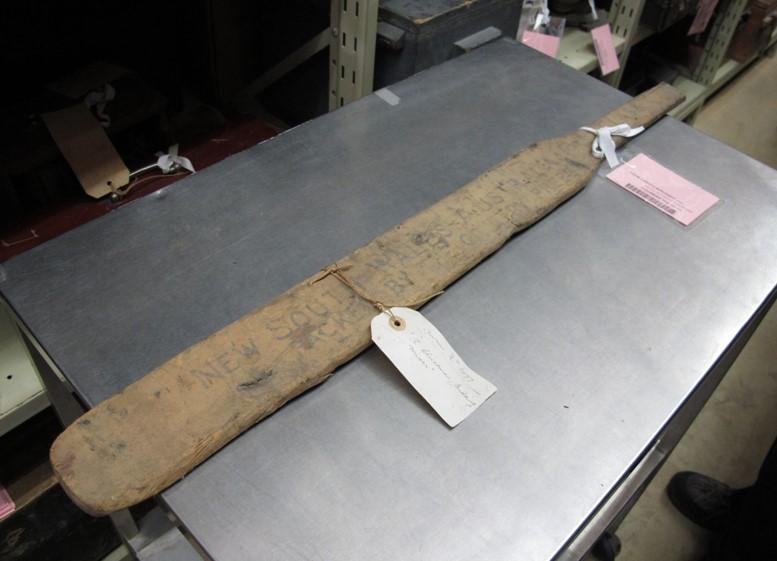A pudding for Christmas

It looks like a makeshift cricket bat, but it’s actually an improvised ‘pudding mixer' from the First World War.
Lance Sergeant Edward McRae used it to make Christmas puddings for wounded men in France while serving with the 10th Field Ambulance.
More than 100 years later, his improvised pudding mixer is part of the National Collection at the Australian War Memorial in Canberra.
Memorial curator Dr Kerry Neale said the ‘pudding mixer’ was a poignant reminder of the men and women who were serving away from home at Christmas during the First World War.
“It can be a simple thing, like a pudding, that can lift the spirits of those serving overseas during the Christmas period,” she said.
“We even have a tinned pudding in the collection sent over for Christmas in 1901 to Trooper Thomas Ashford when he was serving in South Africa during the Boer War. For whatever reason – we don’t know why – Trooper Thomas Ashford decided not to eat his pudding, but to bring it all the way back with him to Australia.
“The tradition of celebrating with a Christmas meal, including pudding, of course, continues during the First World War.
“This improvised mixer was used to make Christmas puddings for the staff and patients at the Main Dressing Stations occupied by the Field Ambulance in 1916 and 1917.
“It was made from a wooden plank from a shipping crate, packed by the Country Freezing Company, which may originally have contained butter or frozen meat – it even has the words ‘New South Wales Australia First Class / Packed by the Country Freezi[n]g...’ printed on one side.
“I can only imagine that for the wounded being treated at the dressing stations, and those carrying out the hard work, some Christmas cheer and pudding would have been a welcome treat.”
Lance Sergeant Edward McRae had enlisted in the Australian Imperial Force at Coleraine, Victoria, in November 1914, describing himself as a cook and baker.
He initially served in Australia, firstly with D Squadron Depot, and from January 1915 with Z Company, 4th Depot Battalion, and later with the Clearing Hospital at Seymour, Victoria.
He was transferred to the 10th Field Ambulance a few months after its establishment at Ascot Vale, and embarked for overseas service in June 1916.
He arrived in France in November 1916 and used the improvised pudding mixer to help spread some Christmas cheer during the dark days of the war.
“In early December 1916, the unit took over the main dressing station at Ecole Rue de Messines at Armentières,” Dr Neale said.
“On 25 December 1916, 95 patients at the main dressing station received special gifts from the Australian Red Cross and extras purchased from funds provided by them.
“The ward was specially decorated and tables laid out for Christmas dinner, where the puddings, made with the assistance of the improvised mixer, were served as dessert.”
Today, the pudding mixer is one of a number of improvised utensils and cookware in the Memorial’s collection, a powerful reminder of the efforts men and women went to during the war to make do.
“McCrae kept the 'pudding mixer' with him and used it again, to make puddings for Christmas 1917,” Dr Neale said.
By then the unit was at Erquinghem, south east of Armentières. That morning the Assistant Director for Medical Services visited both the advance dressing station and the main dressing station. Dinner for the men was served at 1pm, and at the dinner, the Commanding Officer, Lieutenant Colonel John Purdy, expressed the hope that they all would be home for Christmas 1919.
“For some reason, McRae decided not to keep the mixer any longer,” Dr Neale said. “And on Boxing Day 1917, he donated it to the Australian War Records Section.”
The Australian War Records Section had been formed in London in May 1917 and was responsible for collecting and preserving records and artefacts relating to Australia's experiences in the war.
Over the next two years, the records section collected approximately 25,000 objects, as well as paper records, photographs, film, publications, and works of art.
The items were brought to Australia in 1919, forming the basis of what would become the National Collection at the Australian War Memorial.